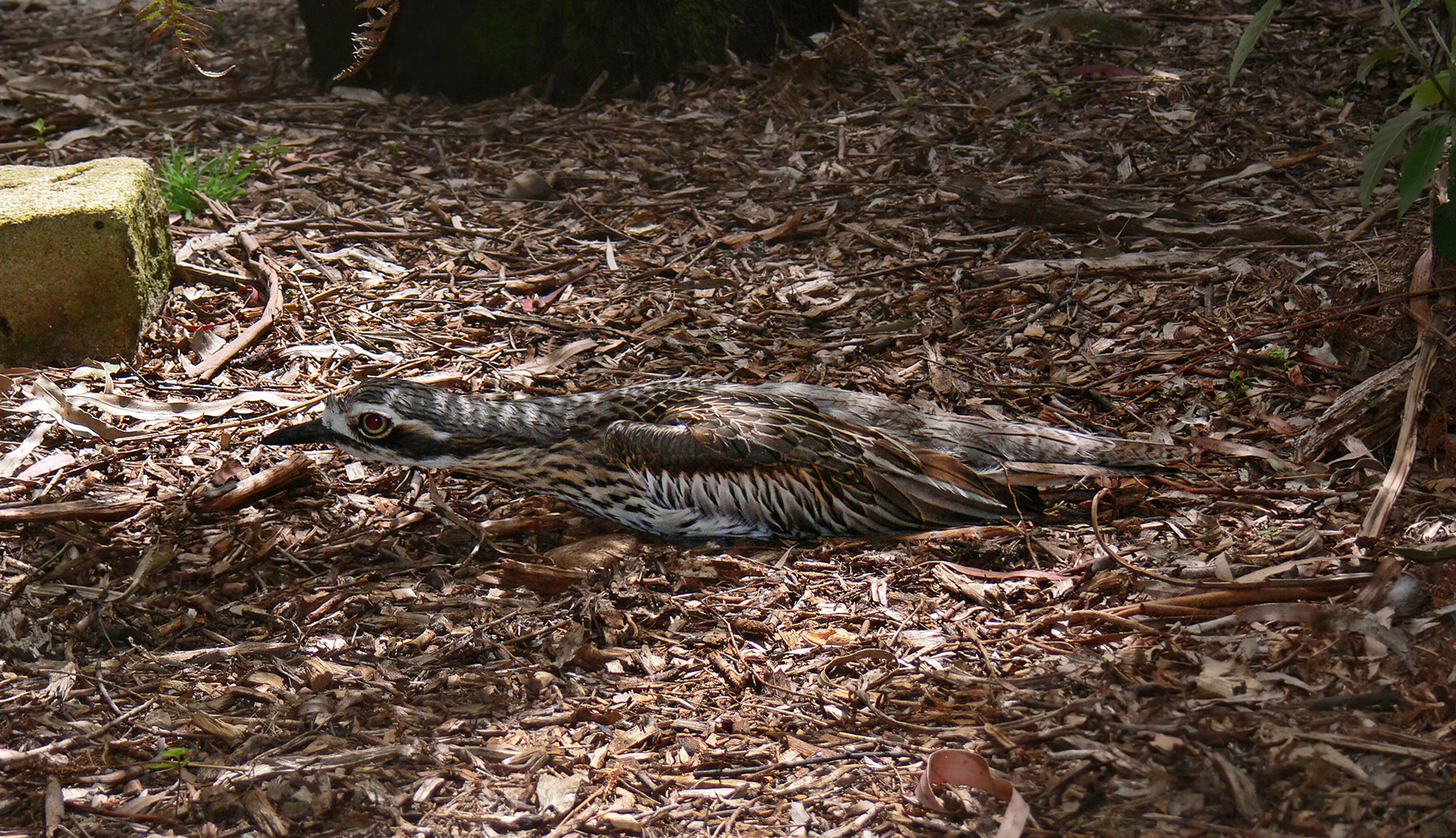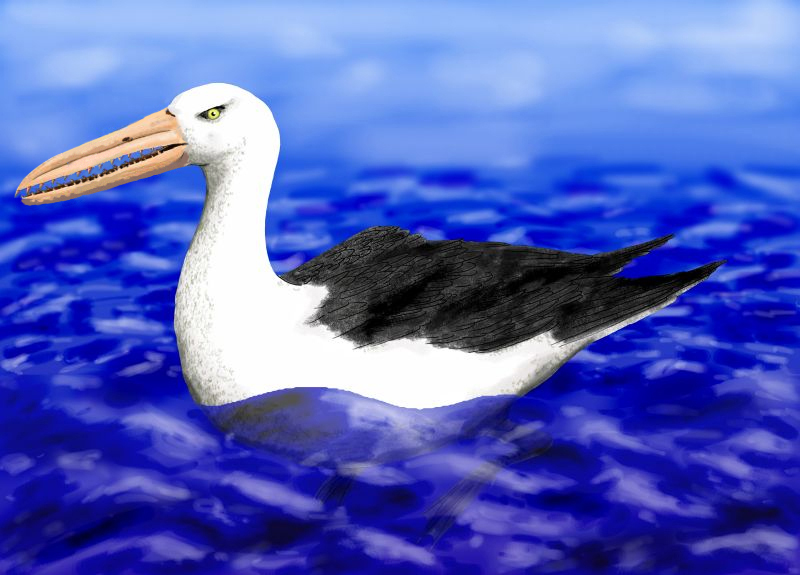|
Stone-curlew
The stone-curlews, also known as dikkops or thick-knees, consist of 10 species within the family Burhinidae, and are found throughout the tropical and temperate parts of the world, with two or more species occurring in some areas of Africa, Asia, and Australia. Despite the group being classified as waders, most species have a preference for arid or semiarid habitats. Taxonomy The family Burhinidae was introduced in 1912 for the stone-curlews by Australian ornithologist Gregory Mathews. The family contains three genera: '' Hesperoburhinus'', ''Burhinus'' and '' Esacus''. The name ''Burhinus'' combines the Ancient Greek ''bous'' meaning "ox" and ''rhis'', ''rhinos'' meaning "nose" (or "bill"). Molecular phylogenetic studies have shown that the family Burhinidae is sister to a clade containing the sheathbills in the family Chionidae and the Magellanic plover in its own family Pluvianellidae. The stone-curlews are not closely related to the curlews, genus '' Numenius'', that belo ... [...More Info...] [...Related Items...] OR: [Wikipedia] [Google] [Baidu] |
Burhinus
''Burhinus'' is a genus of birds in the family Burhinidae. This family also contains the genus ''Esacus''.del Hoyo J, Elliott A, Sargatal J (1996) ''Handbook of the Birds of the World'', ''vol 3.'' Lynx, Barcelona The genus name ''Burhinus'' comes from the Greek language, Greek ''bous'', ox, and ''rhis'', nose. The ''Burhinus'' are commonly called thick-knee, stone-curlew or dikkop. They are medium-sized, terrestrial waders, though they are generally found in semi-arid to arid, open areas. Only some species of ''Burhinus'' are associated with water. The genus ranges from 32 cm to 59 cm in size. ''Burhinus'' are characterised by their long legs, long wings and cryptic plumage. Most species have a short, thick, strong bill,Marchant, S., & P.J. Higgins (eds) 1993. ''Handbook of Australian, New Zealand and Antarctic Birds. Volume 2: Raptors to Lapwings.'' Oxford University Press, Melbourne. to which the generic name (biology), generic name alludes. The stone-curlews are fo ... [...More Info...] [...Related Items...] OR: [Wikipedia] [Google] [Baidu] |
Bush Stone-curlew
The bush stone-curlew or bush thick-knee (''Burhinus grallarius'', obsolete name ''Burhinus magnirostris'') is a large, ground-dwelling bird Endemism, endemic to Australia. Its favoured habitat is open plains and woodlands, where it stalks slowly at night in search of invertebrates such as insects. Its grey-brown coloration is distinguished by dark streaks, its eyes are large and legs are long. It is capable of flight, but relies on the camouflage of its plumage to evade detection during the day; the bush curlew adopts a rigid posture when it becomes aware of an observer. Both sexes care for two eggs laid on the bare ground, usually sited near bush in a shaded position or next to a fallen branch. Taxonomy The bush stone-curlew was first described by English ornithologist John Latham (ornithologist), John Latham in 1801 under the binomial name ''Charadius grallarius''. Latham published three names simultaneously; however, the seniority of ''C. grallarius'' follows the publication o ... [...More Info...] [...Related Items...] OR: [Wikipedia] [Google] [Baidu] |
Esacus
''Esacus'' is a genus of bird in the stone-curlew family Burhinidae. The genus is distributed from Pakistan and India to Australia. It contains two species, the great stone-curlew and the beach stone-curlew. Taxonomy The genus ''Esacus'' was introduced (as a subgenus) in 1831 by the French naturalist René Lesson to accommodate the great stone-curlew. The name is from Ancient Greek ''aisakos'' an unidentified bird variously associated with a robin, a shorebird or a cormorant. In Greek mythology Aesacus was a son of King Priam of Troy. Aesacus sorrowed for the death of his wife or would-be lover, and was transformed into a bird. Species The genus contains two species: Description The two species are larger and heavier-set than the stone-curlews of the genus ''Burhinus''. They resemble small bustards, especially in flight, and have long and heavy bills and long legs. Distribution and habitat The beach stone-curlew is found in coastal areas, as its name suggests, seldom ... [...More Info...] [...Related Items...] OR: [Wikipedia] [Google] [Baidu] |
Eurasian Stone-curlew
The Eurasian stone-curlew, Eurasian thick-knee, or simply stone-curlew (''Burhinus oedicnemus'') is a northern species of the Burhinidae ( stone-curlew) bird family. Taxonomy The Eurasian stone-curlew was formally described by the Swedish naturalist Carl Linnaeus in 1758 in the tenth edition of his ''Systema Naturae'' under the binomial name ''Charadrius oedicnemus''. He specified the locality as England. The name ''Oedicnemus'' had been used earlier by the French naturalist Pierre Belon in 1655. The species is now placed in the genus ''Burhinus'' that was introduced by the German zoologist Johann Karl Wilhelm Illiger in 1811. The genus name combines the Greek ' meaning "ox" with ' meaning "nose". The species name ''oedicnemus'' combines the Greek meaning "to swell", and meaning "shin" or "leg", referring to the bird's prominent tibiotarsal joints, which also give it the common name of "thick-knee". This is an abbreviated form of Thomas Pennant's 1776 coinage "thick-kneed ... [...More Info...] [...Related Items...] OR: [Wikipedia] [Google] [Baidu] |
Wilaru
''Wilaru'' is an extinct genus of presbyornithid bird from Australia during the Late Oligocene to Early Miocene, around 26-22 million years ago. The type species is ''Wilaru tedfordi'', and the second species is ''Wilaru prideauxi''. Discovery and naming The type species, ''Wilaru tedfordi'', was described from fossil material collected from Lake Pinpa, Lake Palankarinna and Billeroo Creek, specifically in the Namba Formation of Lake Eyre Basin, north-eastern South Australia. The genus name ''Wilaru'' is the term for “stone curlew” in the Diyari language of the Lake Eyre region. The specific epithet of the type species ''W. tedfordi'' honours American palaeontologist Richard H. Tedford (1929–2011) of the American Museum of Natural History, who led the 1971 expedition to Lake Pinpa during which much of the descriptive material was collected. The second species, ''Wilaru prideauxi'', was first named in 2016 after the Australian vertebrate paleontologist Gavin Prideaux, w ... [...More Info...] [...Related Items...] OR: [Wikipedia] [Google] [Baidu] |
Hesperoburhinus
''Hesperoburhinus'' is a genus of birds in the stone-curlew family Stone-curlew, Burhinidae. The genus is distributed in Middle America (Americas), Middle and South America. It contains two species, the double-striped thick-knee and the Peruvian thick-knee. Taxonomy and phylogeny The genus ''Hesperoburhinus'' was introduced in 2023 by American ornithologists David Černý, Rossy Natale, American and Dutch ornithologist Paul van Els, and British ornithologist Steven Martin Stewart Gregory to accommodate the double-striped thick-knee and the Peruvian thick-knee. The name is from Ancient Greek hésperos (ἑσπερος, means "western"), and the pre-existing name ''Burhinus'', because it is the only genus of the stone-curlew family Stone-curlew, Burhinidae which is distributed in the western hemisphere. Species The genus contains two species: Phylogeny References {{Taxonbar, from=Q123000905 Burhinidae, Birds of South America Bird genera ... [...More Info...] [...Related Items...] OR: [Wikipedia] [Google] [Baidu] |
Double-striped Thick-knee
The double-striped thick-knee (''Hesperoburhinus bistriatus'') is a stone-curlew, a group of waders in the family Burhinidae. The vernacular name refers to the prominent joints in the long greenish-grey legs, and ''bistriatus'' to the two stripes of the head pattern. Taxonomy The double-striped thick-knee was formally described in 1829 by the German naturalist Johann Georg Wagler from a specimen collected in Mexico. He coined the binomial name ''Charadrius bistriatus''. The specific epithet ''bistriatus'' combines the Latin ''bi-'' meaning "two-" or "double-" with ''striatus'' meaning "stripe". The double-striped thick-knee is now placed in the genus ''Burhinus'' that was erected by the German zoologist Johann Karl Wilhelm Illiger in 1811. In IOC 14.1, the double-striped thick-knee was transferred to the newly described genus ''Hesperoburhinus''. Four subspecies are recognised: * ''H. b. bistriatus'' (Wagler, 1829) – south Mexico to northwest Costa Rica * ''H. b. vocifer'' ( ... [...More Info...] [...Related Items...] OR: [Wikipedia] [Google] [Baidu] |
Curlew
The curlews () are a group of nine species of birds in the genus ''Numenius'', characterised by their long, slender, downcurved bills and mottled brown plumage. The English name is imitative of the Eurasian curlew's call, but may have been influenced by the Old French ''corliu'', "messenger", from ''courir'', "to run". It was first recorded in 1377 in William Langland, Langland's Piers Plowman "''Fissch to lyue in þe flode..Þe corlue by kynde of þe eyre''". In Europe, "curlew" usually refers to one species, the Eurasian curlew (''Numenius arquata''). Description They are one of the most ancient lineages of Scolopacidae, scolopacid waders, together with the godwits which look similar but have straight bills. Curlews feed on mud or very soft ground, searching for worms and other invertebrates with their long bills. They will also take crabs and similar items. Distribution Curlews enjoy a worldwide distribution. Most species exhibit strong migratory habits and consequentl ... [...More Info...] [...Related Items...] OR: [Wikipedia] [Google] [Baidu] |
France
France, officially the French Republic, is a country located primarily in Western Europe. Overseas France, Its overseas regions and territories include French Guiana in South America, Saint Pierre and Miquelon in the Atlantic Ocean#North Atlantic, North Atlantic, the French West Indies, and List of islands of France, many islands in Oceania and the Indian Ocean, giving it Exclusive economic zone of France, one of the largest discontiguous exclusive economic zones in the world. Metropolitan France shares borders with Belgium and Luxembourg to the north; Germany to the northeast; Switzerland to the east; Italy and Monaco to the southeast; Andorra and Spain to the south; and a maritime border with the United Kingdom to the northwest. Its metropolitan area extends from the Rhine to the Atlantic Ocean and from the Mediterranean Sea to the English Channel and the North Sea. Its Regions of France, eighteen integral regions—five of which are overseas—span a combined area of and hav ... [...More Info...] [...Related Items...] OR: [Wikipedia] [Google] [Baidu] |
Anseriformes
Anseriformes is an order (biology), order of birds also known as waterfowl that comprises about 180 living species of birds in three families: Anhimidae (three species of screamers), Anseranatidae (the magpie goose), and Anatidae, the largest family, which includes over 170 species of waterfowl, among them the ducks, goose, geese, and swans. Most modern species in the order are highly adapted for an aquatic existence at the water surface. With the exception of screamers, males have Penis#Birds, penises, a trait that has been lost in the Neoaves, the clade consisting of all other modern birds except the galliformes and paleognaths. Due to their aquatic nature, most species are web-footed. Evolution Anseriformes are one of only two types of modern bird to be confirmed present during the Mesozoic alongside the other dinosaurs, and in fact were among the very few birds to survive their extinction, along with their cousins, the Galliformes. These two groups only occupied two ecologic ... [...More Info...] [...Related Items...] OR: [Wikipedia] [Google] [Baidu] |




